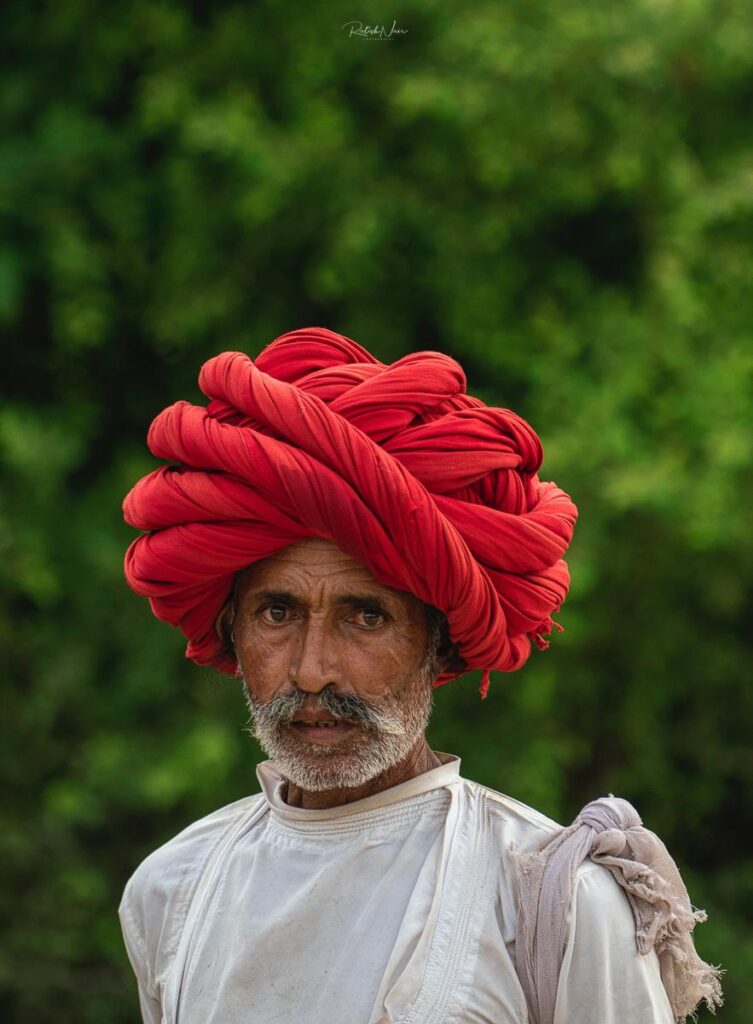
When we think of Rajasthan, what comes to mind is a hot and arid terrain dotted with sparse flora and fauna. Contrary to that, post monsoon Rajasthan is a surprise. Bera has a unique rustic natural charm of its own. As you drive down narrow roads, you’ll find locals with beautiful turbans sitting in the shade of neem trees, a granite rock perched on boulders serving as a settee or a table, the wafting fragrance of eucalyptus & neem freshening the air. The green is unmistakable so are the azure skies. On nearing the granite hills of Jawai, beauty unravels a new facet. A monsoon kissed landscape with beautifully blooming berry trees, luscious and vibrant neem, eucalyptus, crowns of cactus adorning tall granite hills whereas a summer warmed landscape will be all rocks, boulders and dried vegetation.
The granite hills of Jawai are known to have been formed due to a volcanic eruption several hundred years ago. Lore has it that the first feline inhabitants of Jawai crossed over from far off lands in Rajasthan looking for a safe heaven. These hills housing multiple caves, interconnected and secretive passages were a safe haven for the leopards so they decided to make Jawai their home. The shepherd clans of this area are called Rewaris. Rewaris believe themselves to be descendants of Goddess Parvati. They also believe that the Goddess tasked them with job of caring for camels, cows, buffaloes, sheep, goat due to which Rewaris follow shepherding as a way of live since centuries. A Rewari shepherd adorns a red turban which signifies his tribe and profession. In Rajasthani, leopards are called “Seenthrow”.Rewaris fearlessly herd large numbers of their cattle every morning to graze on open pastures and hillocks that surround the granite hills. Rewaris care for the livestock like one would care for their own off spring. Should a seenthrow decide to make a meal out of their cattle, the Rewaris consider it to be an act of God and don’t harm the feline. Leopards & Rewaris continue to live together in perfect harmony. Rewaris are even known to pump out extra water in the cement tanks adjoining the hand pumps and leave it for leopards to quench their thirst.
Locals believe that the seenthrow recognizes the Rewari by his red turban and will only attack his cattle if it is very hungry as it hasn’t made a kill of other prey animals. Rewaris have learnt the ways of the leopard so well that at times they even allow female leopards who have recently littered to make a kill out of lambs & calves. One of the Rewaris I spoke to said that they are perfectly at peace with a leopard mother feeding livestock taken from them to her young. According to him, the female leopard chews the meat off the kill and softens it, making it easier to digest almost like how we prepare khichdi for children. She then gives the meat to her young cubs who slowly learn to ingest meat while taking sustenance from her milk . On hearing this analogy, I realized that the Rewaris and the leopards share a such a beautifully unique bond of give & take. They exemplify the spirit of true humanity and respect for all forms of life. Rewaris respect the seenthrow as a creation of God and the seenthrow in turn respects them by allowing safe passage through the winding roads of Jawai..